Essential Strategies for Balancing Work and Life in Construction
Editorial Note: This article was brought to you courtesy of Rose Morrison, managing editor of ...

Monotonous, repetitive tasks, whether in the back office or on the jobsite, can impact productivity. A Monday.com report (7), for example, found that 54% of workers spend five or more hours per week on tedious tasks that require little or no creativity. For 16%, it’s 10 or more hours. What’s more, over 70% of those surveyed would “love” if automation were implemented for routine tasks, basic data entry—tedious tasks that also introduce the opportunity for human error. 57% of those in the same survey reported they have begun to feel burnout at work, while 40% work past their scheduled work hours a few days a week. Further, 63%+ fear they’re missing the opportunity to showcase their best work.
On the job in construction projects, repetitive tasks can be hazardous to workers and professional tradespeople. A 2012, OSHA grant-funded presentation prepared by the University of California—Berkely for the State Building and Construction Trades Council of California (9) highlighted that 25% of construction injuries were the result of musculoskeletal disorders (MSDs), and that MSDs are continually the biggest cause of non-fatal injuries for construction workers. According to the Bureau of Labor Statistics (3), the incidence rate of MSD cases was 27.2 per 10,000 full-time workers in 2018.
“Repetitive activities are good for productivity and great for lean construction. However, if not carefully managed, repetitive work also breeds boredom and complacency toward safety,” writes Daniel Ruane (12), Vice President of Safety for Pepper Construction – Wisconsin & Illinois. He adds that these repetitive activities allow “the team to stop thinking about what they’re doing,” thus we need to retool these “efficiencies that routines offer without putting ourselves on autopilot.”
In addition to being hazardous to workers, injuries to workers are costly to businesses. According to Liberty Mutual’s 2022 Workplace Safety Index, U.S. businesses spend more than one billion dollars a week on serious, nonfatal workplace injuries (6).
Based on the statistics from the above-mentioned Monday.com report, theoretically based on a 40-hour work week, automating repetitive tasks like these could increase productivity up to 25% for affected workers. What’s more, automating onsite work can, in some cases, deliver installations as much as 50% faster while providing a greater degree of accuracy and put end users at less of a risk of developing the MSDs described above.
In this article, we explore construction automation, the benefits and primary advantages of automation in the construction industry, as well as providing several examples, technological breakthroughs, and applications where the industry may find automating construction work imperative to achieving productivity and onsite safety KPIs.
Automation has existed for some 50 years, though as scholars writing for the International Journal of Computer-Human Studies (4) point out, there has been an increase in the amount of “non-professional” users of automation technology just as few modern computer users have ever opened a terminal as the rise of computer interfaces have made the computers we engage with far simpler to use.
It’s hard to talk about automation without raising ethical and social concerns (we’ve previously covered and will discuss a little later), as the authors of the above-mentioned scholarly article highlight. However, there are many benefits of automation in the construction industry when properly vetted, implemented carefully, and supervised systematically. Owners and professional tradespeople are no stranger to risks and liabilities in construction safety as a concept, the industry routinely considered the #1 most dangerous profession. But just as tradespeople are routinely in harm’s way on a busy, noisy, and chaotic jobsite, proper use and implementation of construction automation can help these operators navigate these unpredictable conditions in a more streamlined fashion that limits their risk.
Possible advantages of automation in the construction industry include:
Now that we’ve covered the possible advantages of construction automation, here are 8 examples of automation in construction we’ll discuss in greater detail below:
We’ve previously discussed the role of construction robots and the benefits they bring to workers, tradespeople, and construction business owners.
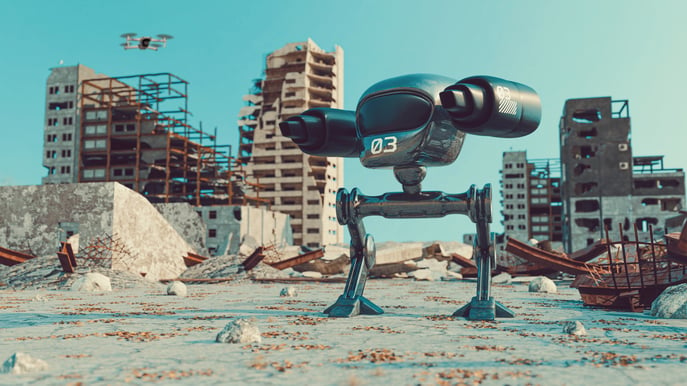
A scholarly study produced for the National Center for Biotechnology Information (2) looked into the efficacy of robots for construction applications, studying 10 onsite robots across 11 contractors from Europe, Asia, South America, and the United States – evaluating for the Safety, Quality, Schedule, and Cost impacts. The results were promising. The robots showed the potential to reduce repetitive site work between 25 and 90%, reduce time spent on hazardous tasks by 72% on average, while accuracy was improved by 55% on average; rework was reduced by over 50%; schedules were reduced on average 2.3 times with a median of 1.4x.; costs were reduced by 13%, with six cases that reduced it but four that increased the total costs.
The industry, what’s more, is taking notice of robots and their possible benefits on the jobsite. For example, For Construction Pros reports the results of a global survey, indicating that 81% of construction businesses plan to introduce or increase the use of robotics and automation in the next decade to address skills shortage and improve safety on their jobsites.
As we’ve previously emphasized, with our industry plagued by skilled labor shortages, “we might view construction robots […as] an inevitability that we need to combat in our fight for survival as an industry” as well as “the vessel through which we accomplish our ends.”
Examples of construction robots that can work with humans to achieve greater site outcomes and protect human workers include:
In their 1999 ergonomics program proposed rules (8), the Occupational Safety and Health Administration (OSHA) of the Department of Labor listed many issues with then-available power tools that put operators at risk, including risk of being exposed to “repetitive motion;” “force, awkward postures, static postures, contact stress, and vibration;” problems arising from overextending fingers in two-finger operation of pneumatic hand-held power tools; being exposed to ergonomic risk factors from the weight and size of the tool, tool handles and/or grips, tool activation (repetitive, one finger), tool kickback, and maintenance; and reduction of dexterity due to loss of blood flow in cold fingers where tissue becomes stiff. They also specifically highlighted “employees with the smallest hands [having] to exert considerably more force to grip and operate […] power tools.”

Since then, much has been done in the field of ergonomic power tool design to better solution these problems, with Milwaukee Tool regularly leading the industry with solutions and tools, for example, that provide smallest-in-class profile; better ergonomics via lower weight (oftentimes 50% lighter weight than the outgoing model), and better grip and shape design to make our tools easier to manage in smaller hands, while also delivering more performance and reducing vibration.
Here are a few examples of how smart power tools can automate onsite work while protecting operators against ergonomic issues that previously arose:
Launched back in 2019, the M12 FUEL Digital Torque Wrench was a new-to-world tool that remains revolutionary.
Just based on performance alone, professional electrical installers can expect accuracy of up to ±2% of full scale for torque critical fasteners.
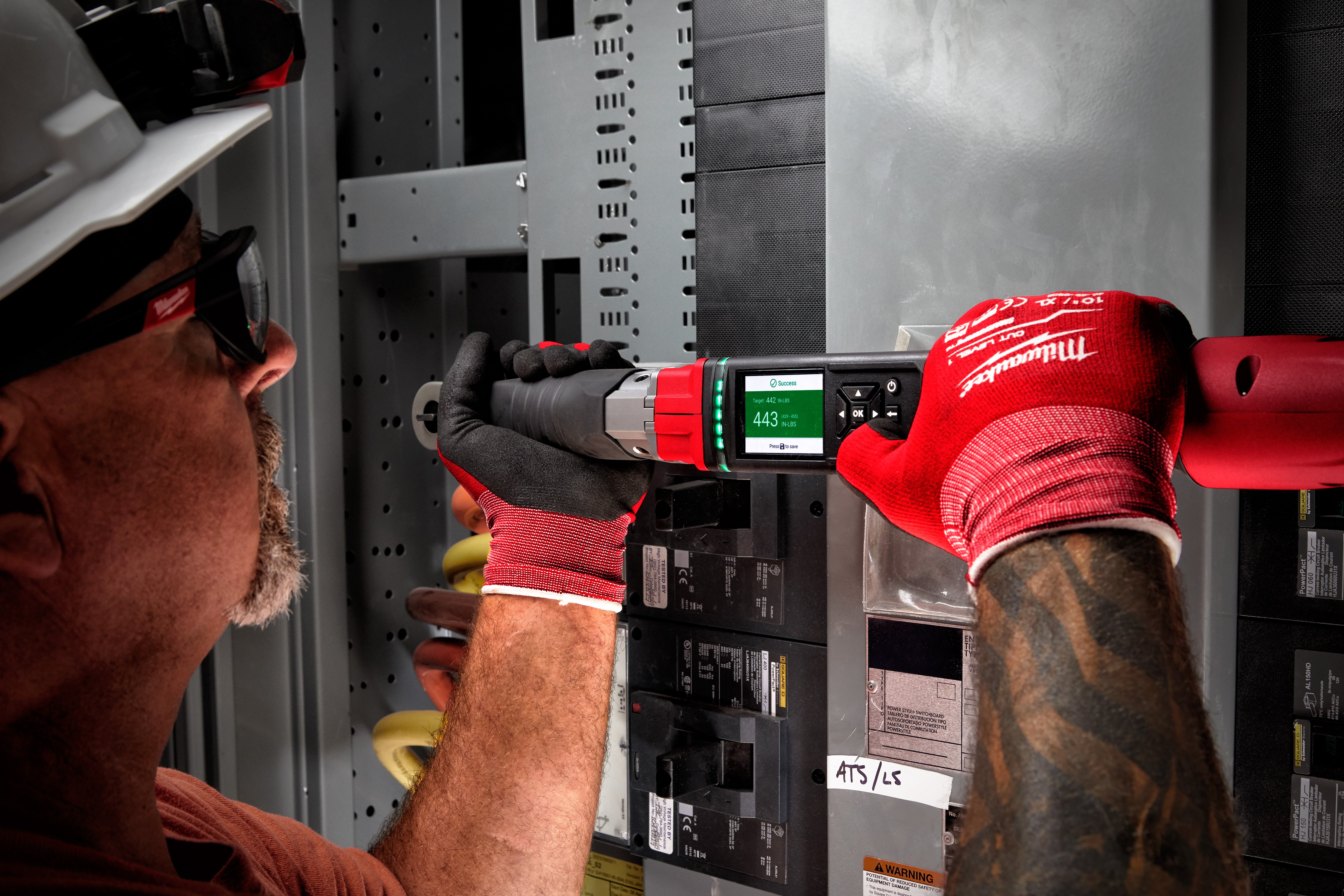 But the truly revolutionary technology built into this tool is how the One-Key software and tool’s hardware interact to deliver a more seamless, safer experience:
But the truly revolutionary technology built into this tool is how the One-Key software and tool’s hardware interact to deliver a more seamless, safer experience:
The M18™ FORCE LOGIC™ 3” Underground Cable Cutter delivers lineman with a safer experience cutting in trenches, removing the physical connection to the tool to allow linemen to cut up to 1500MCM Copper 15kV wirelessly via a remote. The overall design allows operators to easily set up within a vault, manhole, or trench, make the cut, and reset quickly for the next cut.
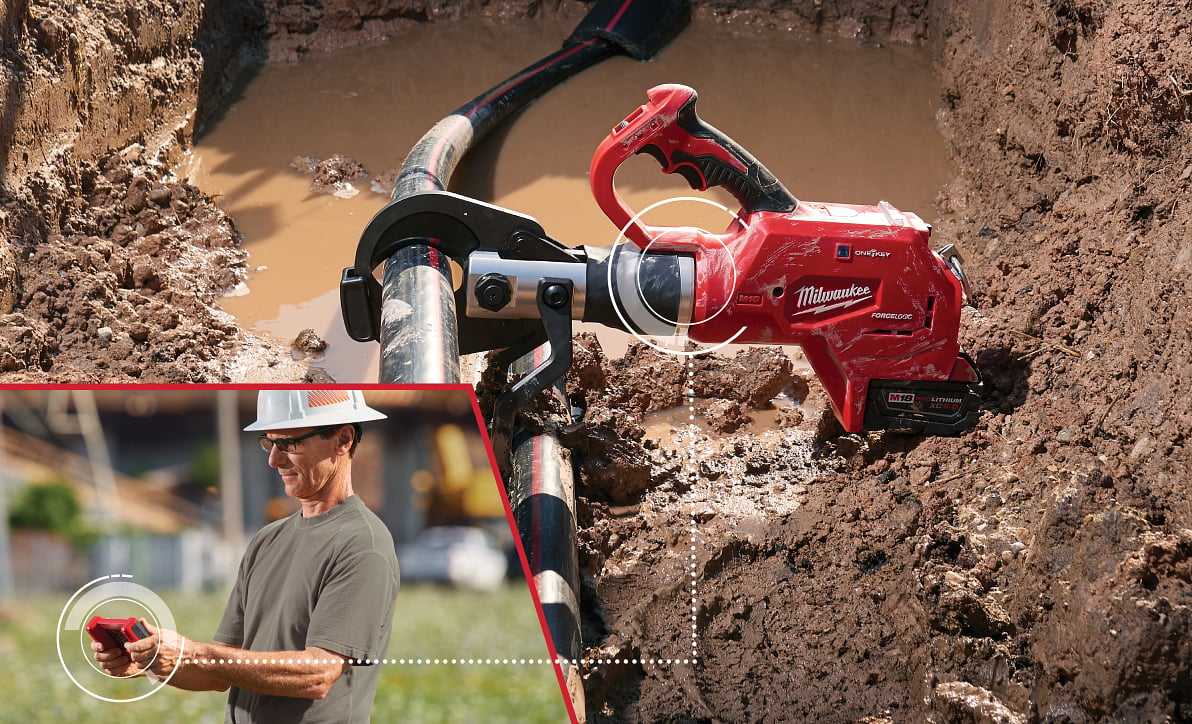
Furthermore, arc flash accidents can be hugely detrimental for crews and the companies they work for – causing serious bodily harm or fatal injuries to large fines and expensive lawsuits. Though eliminating these risks altogether remains the problem to solve, initializing remote work throughout the entire process of cutting an energized conductor vastly improves the safety of those doing the work. Milwaukee Tool created an informative whitepaper, Mitigating Arc Flash Injuries through Remote Wireless Cutting, which you can read to learn more about this innovative tool!
Aside from new-to-world technology and revolutionary new, streamlined processes that smart tools can afford, additional applications of advanced technology like machine learning in power tool design can be seen on full display in our current-generation M18 FUEL ½” drills/drivers and hammer drills.
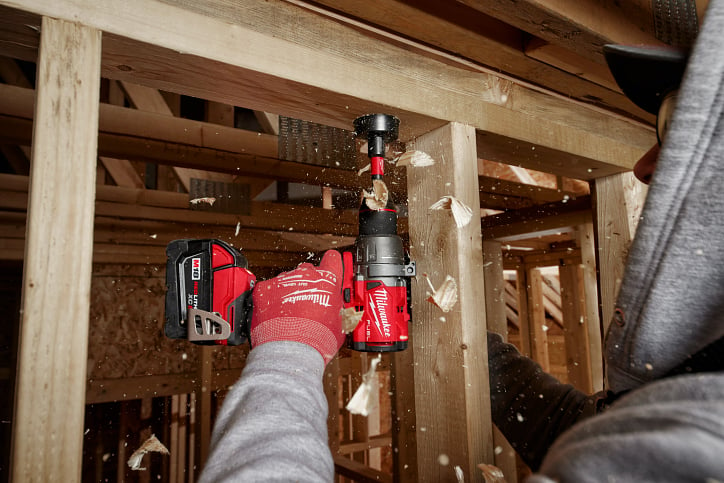
Utilizing this advance tech helps to prevent dangerous events like drill kickback, intelligently leveraging tool usage data in real time to prevent hazardous bind-up situations from becoming injurious to operators.
The One-Key compatible versions of Milwaukee Tool’s iconic SAWZALL® reciprocating saw have long set the bar for optimizing the cutting experience, with some versions featuring (no pun intended) cutting-edge blade and material selection in-app.
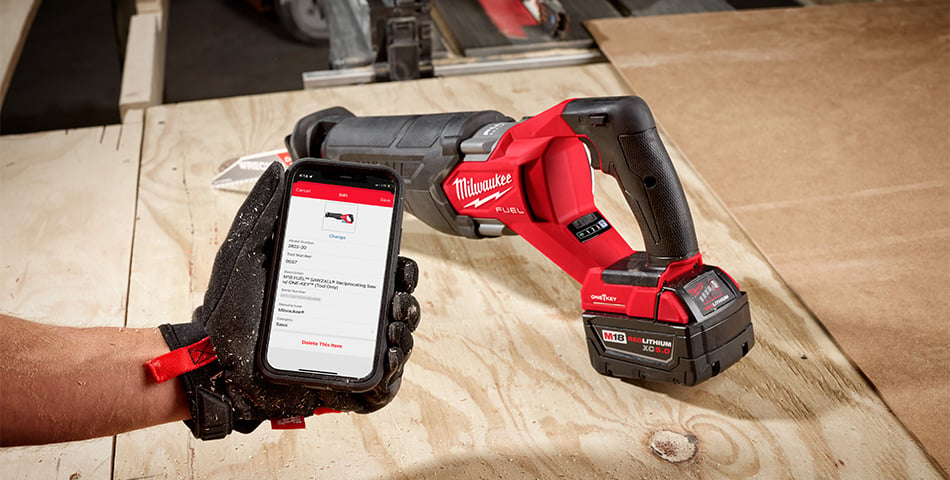
The current generation, similar to the current-gen drills and hammer drills we discussed above, include safety features via “cut brake mode” that can be enabled in the One-Key app and senses when the tool is nearing the end of a cut to prevent kickback that could injure an operator and/or cause damage to materials. The tool is also lighter-weight than the outgoing model while delivering significantly less vibration via a REDLINK™ Plus Intelligence all while providing the fastest-in-class cutting experience.
In addition to reducing hearing loss-causing sound emissions by 50%, the M18 FUEL™ Surge Hydraulic Driver produces 3X less vibration, allowing operators to use the tool for longer with less risk for MSD through prolonged use.
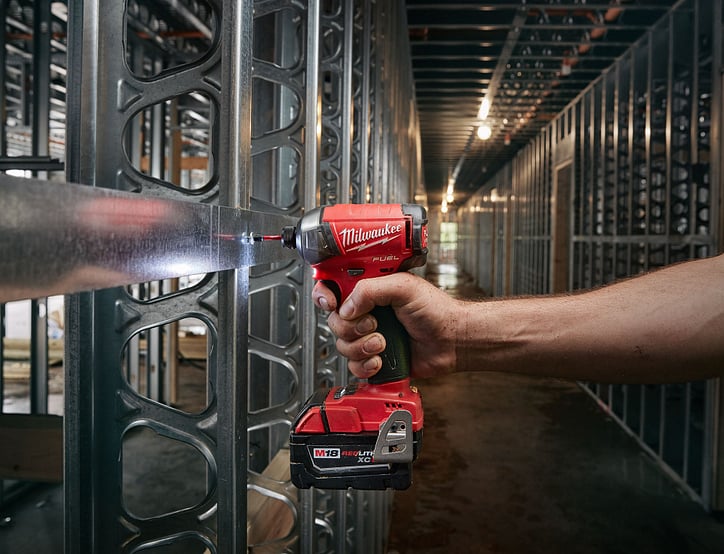
It does all of this while delivering longer sustained torque.
The M18 FORCE LOGIC 12T Utility Crimper helps solve MSD developing in one of the most strenuous and unwieldy applications.
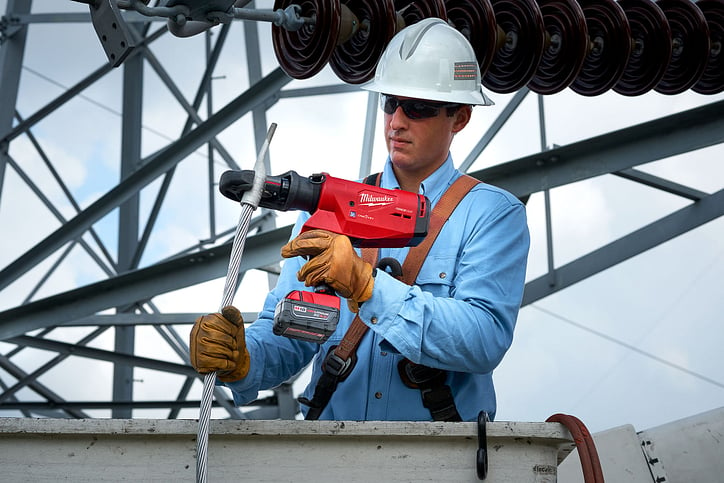
This tool is the lightest 12T crimper and is the most balanced via an ergonomic grip design. It also provides 350˚ head rotation for easy access in tight spaces, PFM™ (Predictive Force Monitoring) with auto-complete to ensure full pressure, on tool event syncing for professional report building via the One-Key web app, and more.
Building information modeling (aka BIM for short), as we’ve previously defined, refers to “the array of digital tools that architects, engineers, and contractors use to create unified, collaborative, multi-dimensional representations of built environments and infrastructure.”

BIM, as we’ve previously covered, can be used to proactively identify issues in designs early on to avoid rework that can quickly snowball and lead to expensive construction cost overruns.
In fact, a 2016 scholarly article (10) released in the ASCE Journal of Construction Engineering and Management studies the efficacy of applying a “framework of automated construction-safety monitoring using cloud-enabled BIM and BLE mobile tracking sensors,” finding positive results that show “a proposed approach can assist in the construction site monitoring process and potentially improve site safety.”
BIM, what’s more, can be used in conjunction with other tools and teams to better streamline communication between teams cross-functionally, keep everyone on the same page, and empower team members to work quickly with fewer delays or problems. BIM has been used collaboratively with anyone from project management and risk management to surveying and GIS to asset management, as well as helping municipalities prioritize sustainability.
Additional examples of automation tradespeople can adopt to streamline processes while keeping them safer onsite include construction wearables.
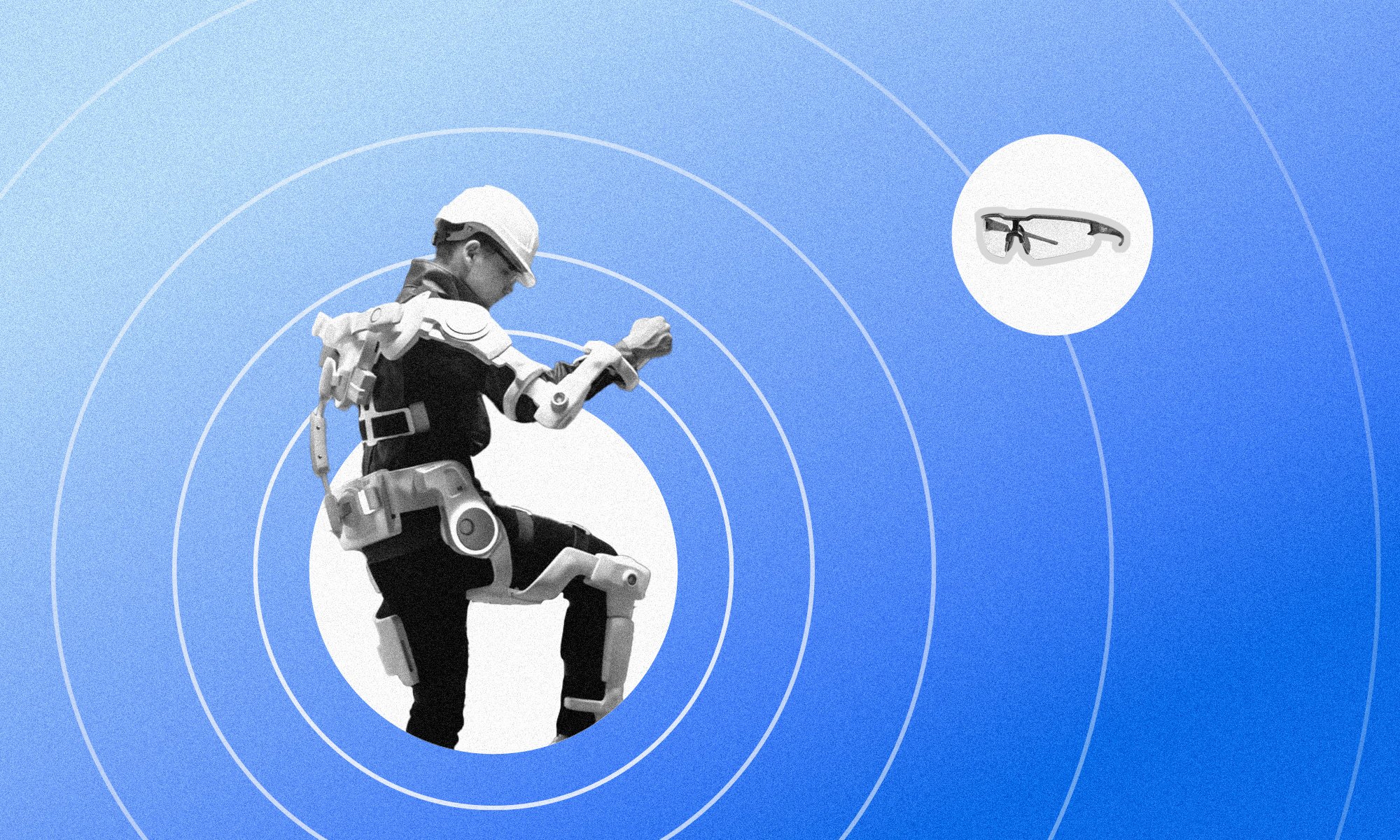
Examples of construction wearables include:
Industrialized Construction (often abbreviated to IC), as we’ve defined, is the “the process through which construction aims to improve productivity through increased mechanization and automation.”
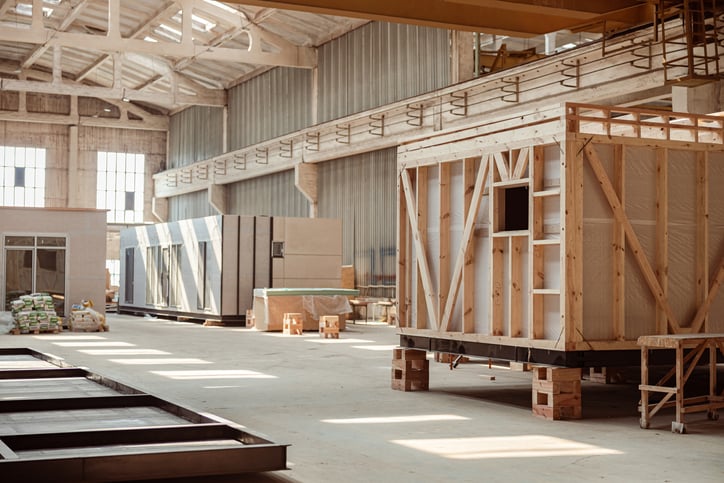
Industrialized construction moves from a one-off “project” process to a “product” framework where commercial contractors adopt lean construction management principles and adopt techniques and processes that look to reduce waste while improving quality assurance and overall consistency among deliverables though productization.
Examples of productization techniques used in industrialized construction often include some of the following systems, methods, and tools:
Offsite construction is the blanket term referring to tools and techniques that offload upfront assembly to an offsite facility. Examples of offsite construction include:
Collaboration among the construction industry is critical, and the industry knows this. For example, did you know that, according to a 2020 ConTech report (5), 78% use mobile devices on the job to view project documents, and that 63% use 3-6 apps for work, yet only 5% reported that all their apps are fully integrated?

In fact, a recent scholarly study for the International Journal of Environmental Research and Public Health (11) proposed that a “new ‘open’ information sharing paradigm” is critical to deliver “data-driven applications in construction safety management,” calling for a construction safety information sharing system based on linked data. At Milwaukee Tool, we build Data & Integrations into our DNA, constantly investigating new data partners, offering contractors opportunities to pilot new programs, and working alongside industry partners to integrate our app so that your multi-faceted teams can better share data created in One-Key. In fact, recent examples of our involvements in leading-edge data partnerships include creating immersive, hands-on experiences with our tools in Oracle’s industry lab.
Ways that software interoperability drives automation and process improvement:
We’ve previously discussed the role of artificial intelligence in construction, as well as the inherent ethical issues with AI.

A recent conference paper (13) presented at the 7th International Conference on Automation and Logistics (ICAL) offered findings into their study of using deep learning to offer “automatic safety monitoring of construction hazard(s).” Its presenters found that site “cleanliness and correctness” surpassed the 95% high criterion values, and they concluded “that the proposed method provides the construction safety personnel an effective tool to monitor the risk and prevent the accident for the construction workers in hazard working zones.”
In short: AI can be used to analyze and optimize ongoing construction processes in order to offer advantages like predictive analytics as well as to proactively assess and identify potential safety risks, hazards, and equipment failure before it occurs and leads to construction downtime.
AI applications in construction fit into many of the concepts we’ve already described (e.g., integrating with construction robots, BIM, and data analytics), as well as some of the other concepts we’ll discuss in the remainder of this article.
Construction drones offer many useful applications on jobsites.
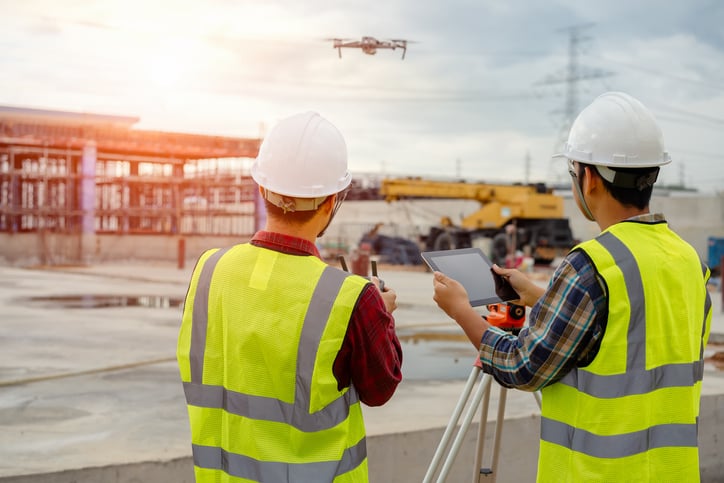
Some of these applications include:
As we’ve previously reported, there are more job openings in construction than companies can fill, an outlier compared to other industries. While there are certainly risks to be considered when adopting construction automation techniques, when properly implemented the advantages automation offers the industry can outweigh its risks.

Additionally, new, cutting-edge construction automation jobs and further development to the skilled trades abound! Just as masons can add overseeing cutting-edge bricklaying robots to their resume to set themselves apart, additional examples of emerging construction automation jobs include:
While the industry continues to be strapped for talent, advances in construction automation help owners and tradespeople alike execute on the growing backlog of projects. This will position the industry favorably to grow and evolve as we enter future decades.
Other concepts that are related to construction automation and are often used within the same breath include:
Short for light detection and ranging, LiDAR is a form of 3-dimensional mapping technology that contractors can use to create “3D maps of physical space by measuring precise distances and spatial relationships between objects and features within an environment.”
LiDAR can be used in construction for:
Virtual reality is a “comprehensive computer-generated simulation of a three-dimensional space.”
Augmented reality, meanwhile, involves “the superimposition of computer generated visuals onto the real world.”
Virtual reality and augmented reality can be used in construction for:
The metaverse may sound like a buzzword created by tech billionaires and to some degree it totally is. However, the metaverse has real-world applications to improving construction industry outcomes.
In short, the metaverse is a “virtual-reality space, where users interact with computer-generated environments and other users.”
Here are some examples of how the metaverse and construction can go together:
Geographical information systems (GIS) are systems that combine mapping with computer databases to, in a nutshell, visualize data that’s tied to a physical place in reality.
Digital twins, in short, are digital representations of a real-world system, and allow the ability aggregate data sources to provide “a composite view across a number of real-world entities, such as a power plant or a city, and their related processes.” Digital twins often incorporate IoT sensors (see below) and artificial intelligence (previously discussed) to offer real value like predictive analytics, providing greater efficiency in decision making through real-time data, and more robust R&D.
The Internet of Things, in short, is a network of individual objects of all types, shapes, and sizes that are connected to the internet, embedding these objects with sensors and computer chips that extend their functionality into the digital realm and help teams operate with better empowerment through real-time data about their mission-critical systems.
IoT can be used to power full smart cities, help HVAC techs design more sustainable solutions, or create a community Bluetooth® network to help you find your tools.
Big data, in short, refers to any dataset that is too large, too fast, and too complex for ordinary computers to process. Big data, the wealth of data at our fingertips, is often a problem businesses, small and large, face—leveraging technologies like IoT (see above) helps teams leverage this massive data ocean and channel it into useful applications and dashboards that can drive meaningful insights and improved business outcomes.

Construction Software Integration: In this free eBook, learn how connecting workflows onsite starts with finding the right cloud data partner.

Sign up to receive ONE-KEY™ news and updates.
Editorial Note: This article was brought to you courtesy of Rose Morrison, managing editor of ...
Editorial Note: This article was brought to you courtesy of Rose Morrison, managing editor of ...
Editorial Note: This article was brought to you courtesy of Rose Morrison, managing editor of ...


